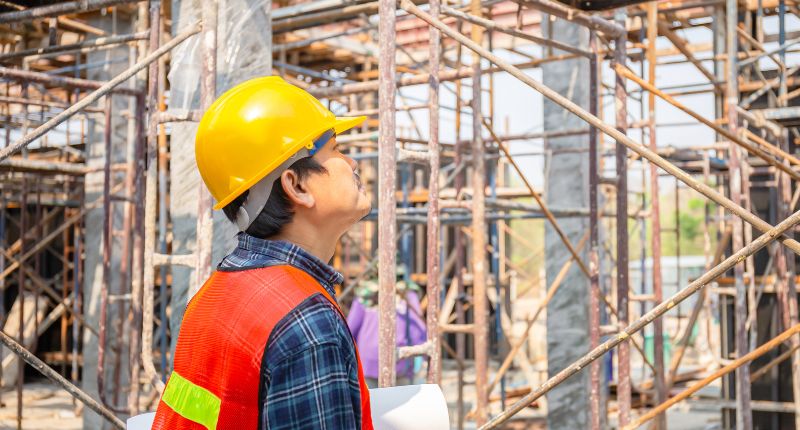
- The build-to-rent sector is forecast to see 55,000 units by 2030.
- This number only represents 1.5% of total rental stock in Australia.
- Largest BTR pipelines are currently in Victoria and Queensland.
Australia’s rental market is forecast to see 55,000 build-to-rent (BTR) units hit the market by 2030, according to Knight Frank.
While at first glance, it appears to be a much-needed boost amid record-low vacancies, the number only accounts for 1.5% of the total rental supply in Australia.
Activity to mirror the British BTR journey
Currently, an estimated 8,350 BTR apartments are being constructed across Australia, with an additional 12,900 units being approved for development in the near future.
Knight Frank chief economist and report author, Ben Burston, said that Australia’s BTR sector is rapidly kicking off after an extended incubation period.
“A wave of construction activity is now underway, with the pipeline is most advanced in Melbourne and Brisbane, but activity is picking up across all major cities,” he says.
“The current groundswell of activity points to a sustained expansion in total stock, and by 2030 BTR is expected to have emerged as a critical part of the housing supply mix, with Australia set to mimic the UK’s BTR journey over the past decade.
“The acceleration in development that we have seen in Australia in 2023 mirrors the beginning of the expansion phase that occurred in the UK from 2015 onwards.
“Over the following eight years to 2023, total UK stock has expanded from 11,312 to 82,636 units, reflecting average growth in the total stock of BTR units of 30% per year, or 9,450 units.
“Our forecast of 55,000 dedicated BTR units in Australia by 2030 implies an annual delivery of 5,900 units as supply accelerates from 2024 onwards.
“This is slower than the UK in terms of annual unit delivery but a similarly rapid expansion in proportionate terms.”
What is build-to-rent
BTR apartments are built to lease out units long-term to renters rather than selling to buyers. To make the units more appealing to the renter demographic, they often incorporate facilities prioritising the tenant’s living experience, like gyms, rooftop spaces, and dog walking services.
BTR also often gives tenants more freedom to customise their units, like painting walls or hanging pictures. Yearly rent increases can be locked in upon signing, and leases can be up to three years, which affords tenants more stability regarding their living situation.
Proponents believe this fledgling sector will significantly secure more supply for Australians struggling through the current housing crisis should BTR projects be scaled.
They argue that BTR can ensure the speedy delivery of more units in the market because they do not require pre-sales to acquire construction financing, and the projects generally comprise 300 to 400 apartments.
Additionally, BTR projects can operate independently of economic cycles and create more jobs without competition for labour and building materials used by the build-to-sell sector.
Previous drawbacks included taxation, notably MIT, however, that was recently addressed.
A new tool to tackle the housing crisis
Burston says the fundamental demand-side drivers for the BTR market have been present for a while. Still, development has been delayed due to a combination of cyclical and structural supply-side setbacks, that have only been recently addressed. He anticipates swift market growth in the sector over the coming decade.
“Given the size of the market for rental accommodation, investors and developers are able to access a market offering the potential for large-scale capital deployment, while the community stands to benefit from a much-needed additional source of supply to help address Australia’s structural undersupply of housing.
“There is a clear case for BTR to play a part in redressing the imbalance between demand and supply in the residential market, with a new model needed to facilitate faster growth in rental supply beyond the sole reliance on the existing build-to-sell model with mum and dad investors providing housing.
“The BTR model aims to align the interests of investors seeking to secure long-term income streams closely linked to inflation, with the interests of tenants, and over time this will result in a more diverse product mix that promises to improve the service offering and widen the range of options for renters.
“In coming months, the pipeline of potential development is likely to expand further as developers seek to position themselves to benefit from the current surge in rental growth, although the actual quantum of schemes under construction may be slower to accelerate until construction cost pressures ease.”
Melbourne leading the way
The Victorian capital currently has 4,920 apartments under construction and another 8,250 approved. The city accounts for 45% of the nation’s BTR pipeline.
Brisbane comprises 27%, with 1,743 underway and 2,567 approved, followed by Sydney with 1,529 and 965 units respectively.
“While many think the market is largely confined to Melbourne and Sydney, cities like Perth and Canberra also seeing signs of growing interest, partly owing to relatively low land values and strong rental yields,” said Knight Frank’s head of alternatives, Tim Holtsbaum.
“Inner fringe locations in Melbourne, Brisbane and Sydney are natural candidates for the first wave of schemes, given their offer of amenity, close proximity to CBDs and a high proportion of potential tenants given their comparatively well-educated and young populations.
“But over time we expect to see a broadening of developer interest to encompass middle-ring suburbs with high levels of amenity and connectivity.”







